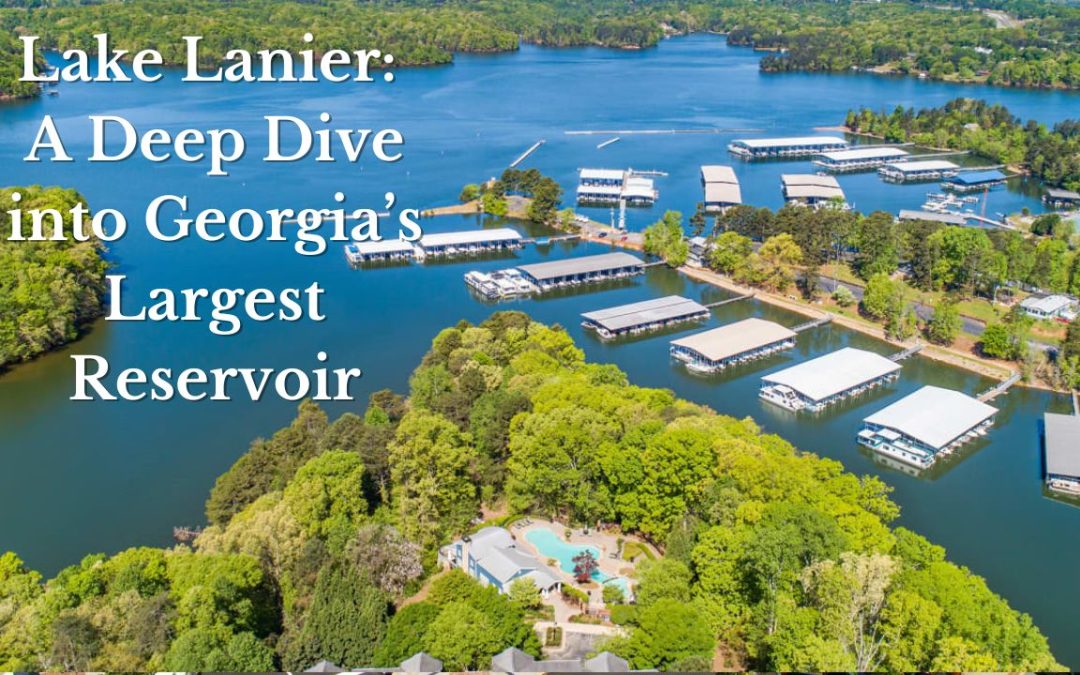Lake Lanier: A Deep Dive into Georgia’s Largest Reservoir
Lake Lanier is a man-made reservoir located in the northern part of Georgia, notable for its vast expanse and scenic beauty.
Created by the completion of the Buford Dam on the Chattahoochee River in 1956, the lake serves multiple purposes including flood control, power generation, and recreation. Additionally, it is sustained by the inflows from the Chestatee River, contributing to its considerable size of 38,000 acres with an intricate shoreline that stretches for hundreds of miles at normal water levels.
As a popular recreational destination, Lake Lanier attracts millions of visitors each year who engage in a variety of activities.
The lake’s recreational offerings range from boating and swimming to fishing, with amenities like rental services for watercraft, numerous parks, and camping facilities enhancing its appeal.
Despite it’s popularity, the lake has a complex and often discussed history, with urban legends and tales that whisper of its past before becoming the recreational hub it is today.
Key Takeaways
- Lake Lanier is a multi-purpose reservoir in Georgia, revered for recreation and natural splendor.
- Its substantial size and shoreline are a result of the Chattahoochee and Chestatee rivers feeding into it.
- The lake’s rich history and recreational facilities draw millions of visitors annually.
Geography and Ecology
Lake Lanier serves as a prime example of human intervention reshaping a region’s geographical and ecological landscape. This reservoir, with a vast surface area and diverse ecosystems, stands as a testament to both engineering and environmental adaptation.
Geographical Location
Lake Lanier is situated in the northern part of the U.S. state of Georgia. It’s bound to the northwest by the foothills of the Blue Ridge Mountains and is predominantly within the confines of Hall, Forsyth, Dawson, Gwinnett, and Lumpkin counties.
The lake’s location has made it an essential water source and recreation hub for the surrounding populous and growing Atlanta metropolitan area.
Hydrography
Formed by the damming of the Chattahoochee River, Lake Lanier’s creation has profoundly altered the local hydrography.
The reservoir includes 38,000 acres of water and about 692 miles of shoreline. Operating as a multi-purpose utility, the lake provides hydroelectricity, flood control, and water supply.
- Water Volume: Varies depending on rainfall and water management but the lake maintains a “full pool” at an elevation of around 1,071 feet above sea level.
- Buford Dam: Crucial structure maintaining lake levels, completed in 1956.
Flora and Fauna
Flora: The area surrounding Lake Lanier boasts a rich variety of plant life, typical of the Southeastern United States.
Deciduous forests with tree species like oaks, hickories, and pines provide green cover and habitats for wildlife. In addition, the lake has aquatic plants that are vital for maintaining water ecology.
Fauna: The lake supports a diversity of animal species. It is home to various fish species like spotted bass and striped bass, making it a popular fishing destination.
Birds, including the great blue heron and ospreys, are often seen gliding above the waters or perched along its shores. Mammals such as white-tailed deer, raccoons, and foxes populate the surrounding lands.
History and Human Impact
Lake Lanier’s history is deeply intertwined with human activity, from its construction for specific utility purposes to its role in local economic and recreational life.
This section explores the lake’s man-made origins, impact on the surrounding communities, and the growing environmental concerns associated with its use and upkeep.
Construction and Development
Lake Lanier was created in the 1950s primarily for flood control, drinking water, and hydroelectric power. The construction of Buford Dam on the Chattahoochee River transformed the landscape into what is now a 39,000-acre reservoir that touches five counties in North Georgia.
- Year completed: 1956
- Primary purposes: Flood control, drinking water supply, hydroelectric power
Local Economy and Recreation
The lake serves as a major recreational destination, with a significant impact on the local economy.
It attracts millions of visitors annually for activities such as boating, fishing, and swimming. The surrounding area benefits from the tourism revenue, with many businesses relying heavily on the influx of visitors.
- Number of visitors: Millions per year
- Popular activities:
- Boating
- Fishing
- Swimming
Environmental Concerns
As the population in the region grows, Lake Lanier faces a number of environmental pressures such as pollution, habitat disruption, and consequences from fluctuating water levels.
Periods of drought have repeatedly underscored the necessity for sustainable water management practices to maintain the health of the lake’s ecosystem. Addressing these concerns is essential for ensuring the longevity and vitality of Lake Lanier.
- Pressures:
- Pollution
- Habitat disruption
- Management necessity: Sustainable practices for long-term health
Frequently Asked Questions
The Frequently Asked Questions section addresses common curiosities and concerns about Lake Lanier, from its rumored haunting to safety advice for visitors.
What are the common myths about Lake Lanier being haunted?
There are stories circulating that Lake Lanier is haunted due to a number of reported drownings and accidents that have occurred there over the years.
How many deaths have been reported at Lake Lanier?
It is reported that more than 200 deaths due to drowning and boating accidents have occurred at Lake Lanier since the 1990s.
Can you give an overview of the history of Lake Lanier?
Lake Lanier was created in the 1950s by the construction of Buford Dam on the Chattahoochee River and is named after poet Sidney Lanier.
What factors contribute to Lake Lanier’s reputation for being dangerous?
Factors such as rapid water level changes, underwater hazards, and heavy boat traffic have contributed to Lake Lanier’s reputation for being dangerous.
What is the truth behind the underwater structures in Lake Lanier?
Before Lake Lanier was filled, the area was a town with buildings, and some structures were not fully removed, leading to underwater hazards.
Are there any specific safety recommendations for swimming in Lake Lanier?
Visitors are advised to wear life jackets, swim in designated areas, and stay vigilant for boat traffic to ensure safety while swimming in Lake Lanier.



